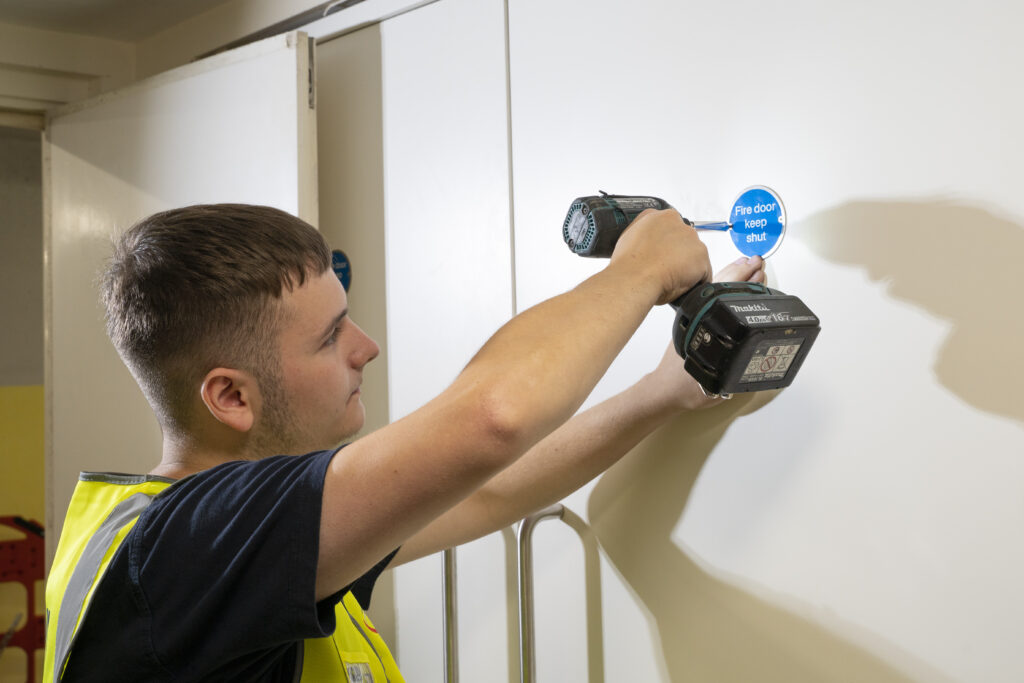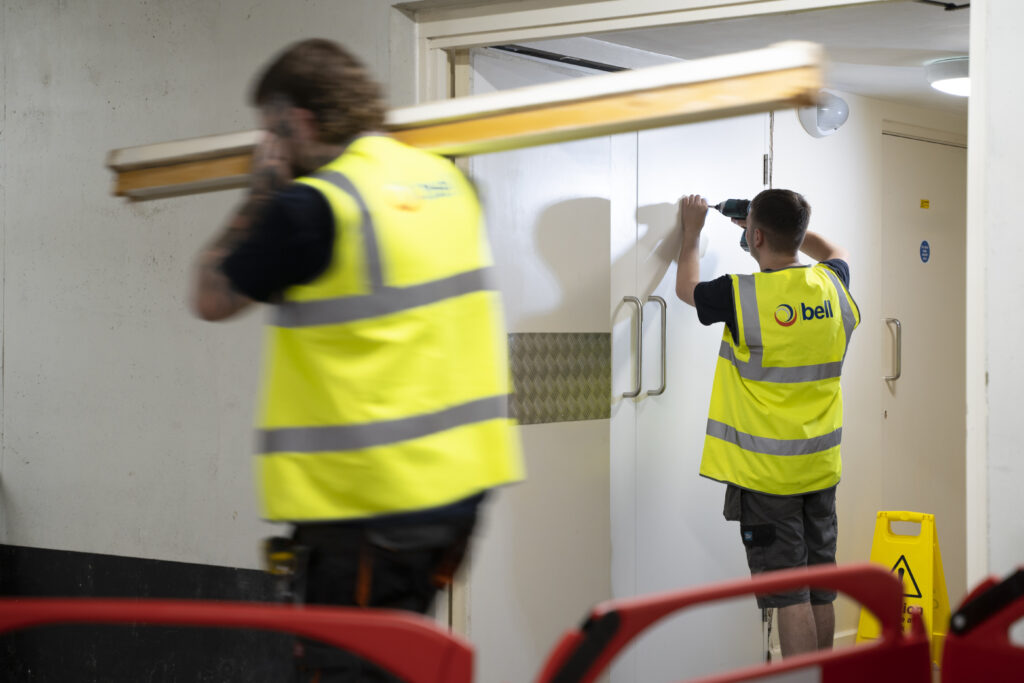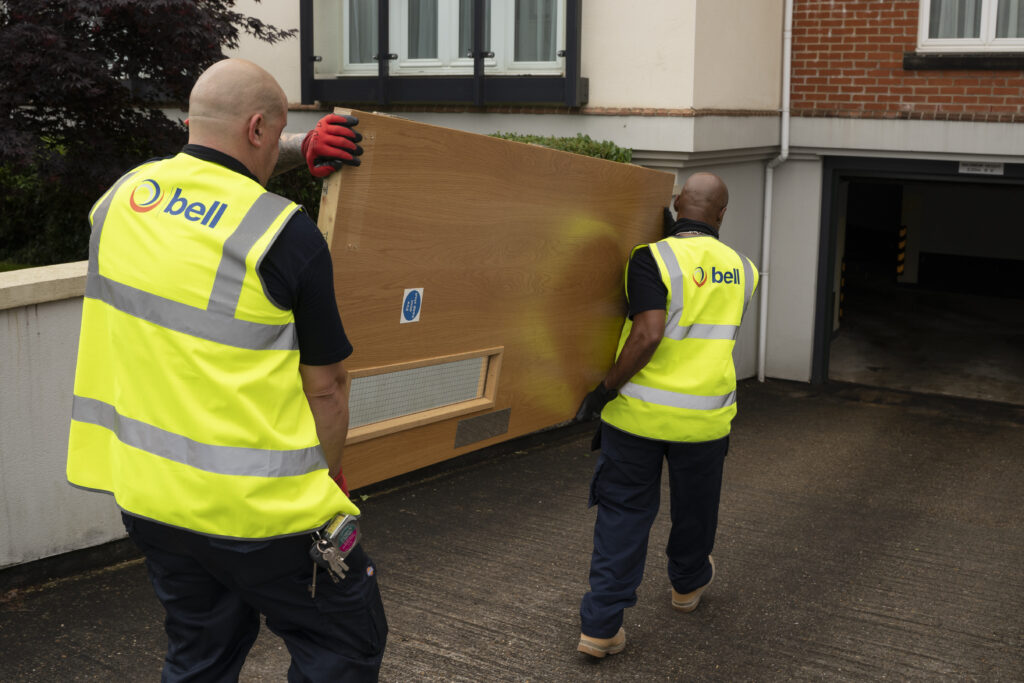Types of Passive Fire Protection
Introduction to Passive Fire Protection
It’s probably true to say that, in the UK, more people are aware of active fire protection systems such as hand-operated fire extinguishers, manually activated alarms, and sprinkler systems. However, there is another type of system that helps limit the spread of flames, smoke, and toxic gases while remaining inactive itself. This is known as passive fire protection.
By containing a fire in a specific area of the building, passive systems help protect lives, allowing time for people and, in some cases, animals to evacuate the building. These systems can also help reduce the amount of damage caused to the building and its contents by fire and smoke.

Passive Fire Protection Defined
To define passive fire protection concisely, you can say that this type of system is a barrier or shield, intended to stop the spread of fire from one part of a building to another. Even if there is an initial active element in one of these systems, they remain non-active throughout the fire.
Most passive fire protection systems are always non-active, as it’s their structure, materials of construction, and location that make them effective. A few examples of these systems that we will explore in more detail below include fire doors, firewalls, and smoke baffles.
Passive Fire Protection Systems
The best passive fire protection systems are comprehensive, they combine fire-resistant and flame-retardant structural elements, building/manufacturing materials, and compartmentation strategies.
Few, if any, materials on the planet remain completely unaffected by the high temperatures generated by fires, especially large building fires. Considering fire’s ability to spread and the amount of damage that smoke can do to both people and property, it makes sense to use a combination of passive fire protection systems for maximum protection. Compliance with UK building codes and laws is another reason to use a combination of systems.
Through careful placement of protection systems, it’s possible to compartmentalise a building. Meaning the the building is divided into compartments that are separated by firestops, which can consist of one or more systems for passive fire protection.
Examples of Passive Fire Protection
There are numerous passive fire protection examples in the world around us. Some of the most common examples are:
- Fire curtains
- Fire doors
- Fire floors
- Fire walls
- Flame shields
- Intumescent paint
- Mineral fibre matting
- Smoke baffles
When it comes to compartmentation, ceilings, doors, floors, and walls play a crucial role as barriers that stop or hinder fire from spreading through a building. None of these elements should crack or develop holes. Instead, they should maintain a relatively good degree of insulation and they should remain functional throughout the designed fire resistance period.
Structural Components in Passive Fire Protection
Depending on the materials that passive fire protection systems, such as fire-rated floors and walls, are made from, as well as any additional steps taken to enhance their fire resistance, they can offer between 30 and 120 minutes of resistance to fire.
This is vitally important for a couple of reasons.
- Stopping or slowing the spread of flames and smoke helps to maintain the building’s structural integrity. A large fire in a building, especially one with low or no fire protection, can cause structural steel elements to collapse, which could lead to the collapse of part or all of the building. This could potentially result in loss of life as well as financial and reputational losses.
- They allow for a window of time during which people can evacuate the building safely.

Fire-Resistant Materials
One of the most important things to remember about passive fire protection systems is that they can be incorporated directly into the design of the building. However, not all fire-resistant and/or fire-retardant materials offer the same resistance against fire. Let’s take a closer look:
- Brick and mortar: While individual bricks can withstand temperatures as high as 1,200°C, the mortar used to hold them together in walls has less fire resistance and can expand and crack if temperatures increase suddenly and drastically. Despite this drawback, brick remains a popular fire-resistant material.
- Cast iron: Cast iron will shatter when exposed to high temperatures and then suddenly cooled. Due to the material’s less-than-ideal fire resistance, this uncommon building material is usually covered with brickwork or concrete when used in buildings.
- Concrete: Reinforced concrete can withstand temperatures as high as 1000°C for approximately 60 minutes before it begins to be negatively affected by the heat. However, other concretes might have much less fire resistance due to their composition.
- Glass: Ordinary glass cracks and shatters when exposed to high heat and then left to cool. However, fire-resistant glass that is laminated, reinforced, or otherwise toughened behaves differently and offers much better resistance, especially if it has been reinforced with steel wire.
- Steel: While known universally for robust tensile strength and structural integrity, steel is not immune to fire. Exposing steel to fire for too long can lead to beams sagging and columns buckling, which could result in the entire structure collapsing. Temperatures higher than 600°C induce stress in mild steel, while temperatures of 1400°C or higher will melt it completely. Steel should be combined with intumescent paint for greater fire resistance.
- Stone: Most types of stone used in construction do not offer good fire resistance, as they tend to disintegrate when heated to high temperatures before being suddenly cooled. That said, exothermic reactions of stone can vary considerably. For example, sandstone has good resistance to moderate fire conditions, while limestone will crumble, and granite will explode when exposed to high temperatures.
- Timber: Timber that has been treated with surface chemicals such as ammonium phosphate, sulphate, and zinc chloride for use in heavy construction has much better fire resistance than untreated timber. However, it is still not an ideal material to use for passive fire protection.
Compartmentation as a Passive Fire Protection Strategy
Compartmentation arguably is one of the most popular and effective passive fire protection systems. This strategy sees a building or part of a building constructed in a way that is intended to slow down or stop a fire from spreading to another part of the same building or of another building.
This is done through the use of fire-resistant walls, floors, doors, and ceilings, as well as other passive solutions such as smoke baffles intended to stop the spread of smoke, fire curtains made of fire-resistant materials that drop down from the ceiling to form barriers, and fire doors with expanding heat-sensitive seals. The idea is to seal off the affected compartment as much as possible, creating a window of time for evacuation and for emergency services to arrive.

The most comprehensive protection against fires for buildings is a combination of active and passive fire protection strategies. While it’s always good and necessary to have active protection systems such as sprinklers, automated fire doors, and fire extinguishers available, it makes sense to incorporate passive fire protection into the very fabric of a building.
If you’re interested in finding out more or protecting your business, contact Bell for premium passive fire protection services in the UK.
